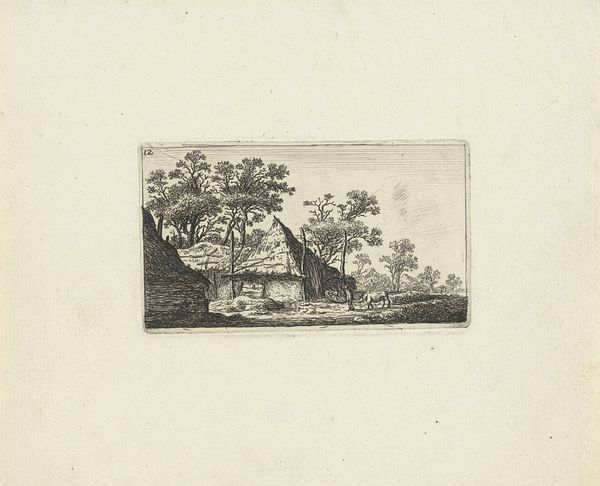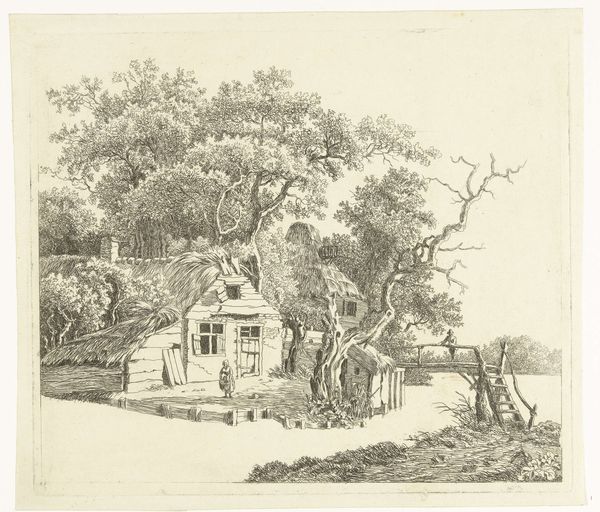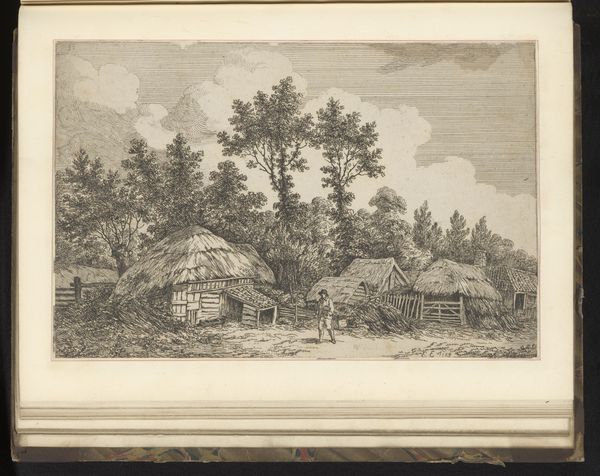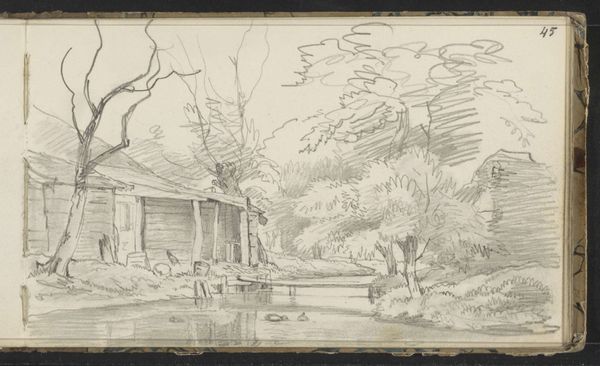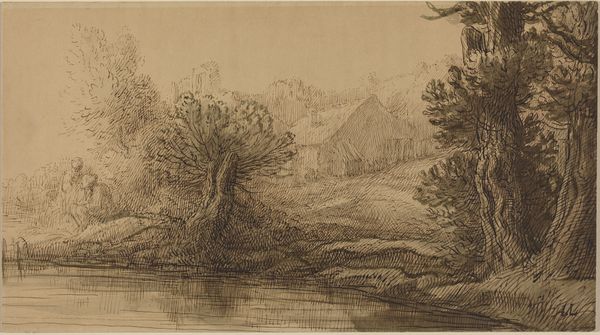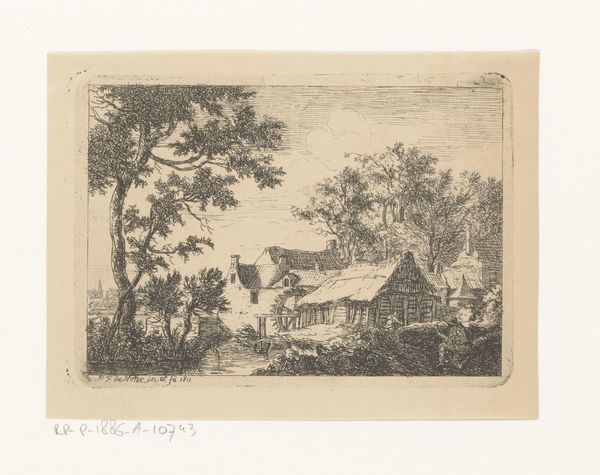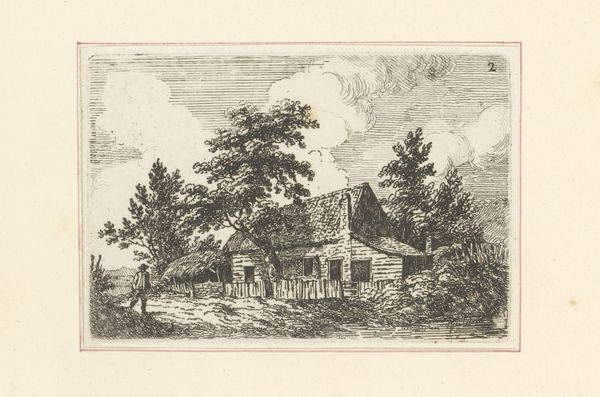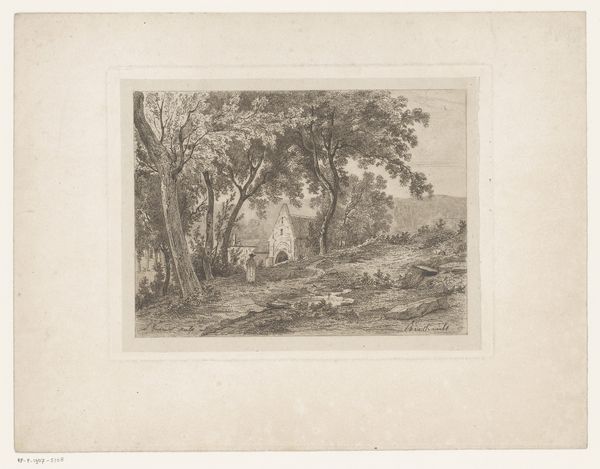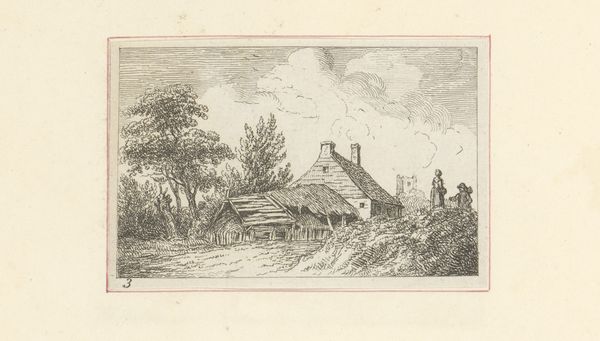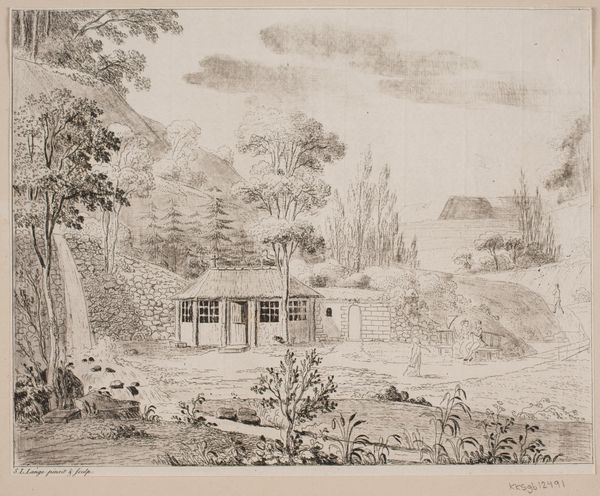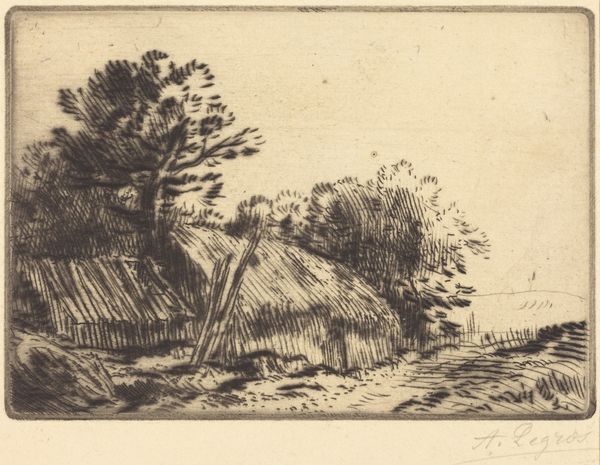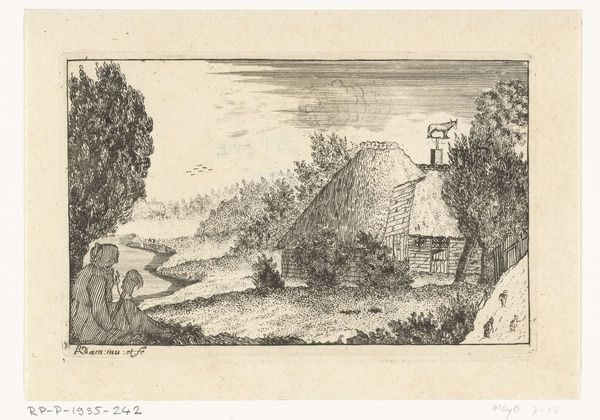
drawing, print, etching, paper
#
drawing
#
dutch-golden-age
# print
#
etching
#
landscape
#
paper
Dimensions: 207 × 339 mm (image/plate); 277 × 362 mm (sheet)
Copyright: Public Domain
Jan van de Velde II created this etching, Dilapidated Hut, sometime in the early 17th century, a period when the Dutch Republic was establishing itself as a major economic and cultural power. Van de Velde's choice of subject matter reflects shifting social and economic conditions. In the foreground, a run-down hut suggests the presence of poverty, perhaps commenting on the uneven distribution of wealth. In the background, a lone fisherman is pictured. Is the fisherman enjoying a leisurely day, or trying to survive by catching what he can? The work invites viewers to consider the lives of those on the margins of Dutch society. The etching medium itself, with its capacity for detailed lines and tonal variation, allowed artists to produce images that could be widely disseminated, reaching a diverse audience. Art historians use a range of resources, from period documents to economic data, to deepen our understanding of works like this. Through careful research, we can begin to appreciate the complex interplay of art and society in the Dutch Golden Age.
Comments
No comments
Be the first to comment and join the conversation on the ultimate creative platform.
